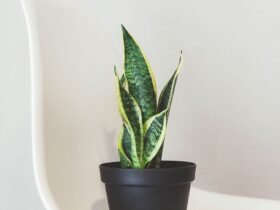Hickeys occur when suction during intimate moments breaks blood vessels near the skin, leaving a visible mark. Whether you wear them proudly or prefer to hide them, there are plenty of tricks to cover them up.
Hickeys, or as scientists call them, subdermal hematomas, are love’s graffiti. If you’ve ever scrambled for scarves or turtlenecks, welcome to the kissing booth of knowledge! Join us as we navigate the lifecycle of hickeys, from their eye-catching start to their subtle fade, and learn how to speed up their departure.
A hickey, medically known as a subdermal contusion or hematoma, is simply a bruise that forms as a result of vigorous kissing or sucking on soft skin, typically around the neck. This intense suction causes the tiny blood vessels under the skin, a.k.a. capillaries, to burst and release blood into the surrounding tissues. The immediate result? An unmistakable red or purple mark that gradually shifts to a darker shade as it heals.
From a medical standpoint, hickeys are intriguing. They showcase the skin’s sensitivity and the body’s rapid response to minor vascular injury. Not so romantic when you think about it scientifically, right? But hey, it’s all part of the human experience of showing affection — or something like that.
When you get a hickey, your body starts a healing process that resembles how it deals with other bruises. Here’s a more detailed look at each stage of a hickey’s life cycle.
The initial mark
Immediately after the passionate moment, a hickey appears on the skin, screaming in shades of bright red or deep purple. This initial coloration is due to blood from the ruptured capillaries pooling beneath the skin’s surface in response to the suction. It’s your skin’s way of signaling that there’s been some minor internal damage in that area.
Color changes
As the hickey begins to heal, it undergoes a whole wardrobe of color transformations, showcasing your body’s metabolic process at work.
Initially, the hickey darkens as the blood begins to oxidize. Then, after a few days, the body starts to break down and reabsorb the blood, so it turns lighter — going from blue to green to brown and, finally, mellow yellow. This rainbow journey reflects the breakdown of hemoglobin, the iron-containing substance in the blood, into biliverdin and bilirubin.
The fade-out
Finally, your hickey starts to ghost you. Over a week or two, depending on factors like your skin type, overall health, how severe the hickey was., and how your body rides the healing waves, the last traces of your hickey fade into nothing.
During this stage, the body’s immune system clears away the remaining by-products of the broken-down blood. White blood cells swoop in like a cleanup crew at a festival, gobbling up and digesting the debris in a process called phagocytosis, while increased blood flow to the area helps to flush out the remnants.
How to heal a hickey
Need a hickey gone yesterday? Here’s how to help your hickey heal. Start with a cold pack — grab a spoon from the freezer or a chilled gel pack and gently press it against your hickey. This will help reduce any swelling and scatter the blood pooling under your skin, which can help minimize that bold bruise.
After using cold treatment for the first 48 hours, it’s time to turn up the heat. Switch to warm compresses to get the blood flowing smoothly again. A few minutes a few times a day invites more circulation to the hickey zone, helping you hustle through healing and clear out the blood remnants more swiftly.
You can also try a dab of comfrey ointment. Research shows it may reduce bruise size and coloration for some peeps.
How to hide a hickey
Caught off guard? A little concealer or foundation over the hickey makes it less noticeable.
Not into makeup? Scarves and high-necked shirts are also great accessories for your camouflage arsenal.
How long do hickeys last?
Typically, a hickey will last anywhere from 5 days to 2 weeks, depending on its severity and your body’s healing capabilities.
How to prevent a hickey
Communication is key! Let your partner know your feelings about receiving a hickey — some might find it fun, while others may prefer to keep their necks clear.
Can hickeys be dangerous?
While generally harmless, hickeys can sometimes lead to complications like skin infections or, very rarely, blood clots. It’s best to keep the affection gentle to avoid any issues.
Hickeys are nothing more than bruises in disguise. They start as bright red to purple love stamps and gradually fade over several days to a couple of weeks. Speed up the process with heat and cold packs or a splodge of comfrey cream.
Remember, the best approach to handling hickeys — like all aspects of relationships — is communication and care. So go forth, love responsibly, and keep a scarf handy, just in case!
















Leave a Reply